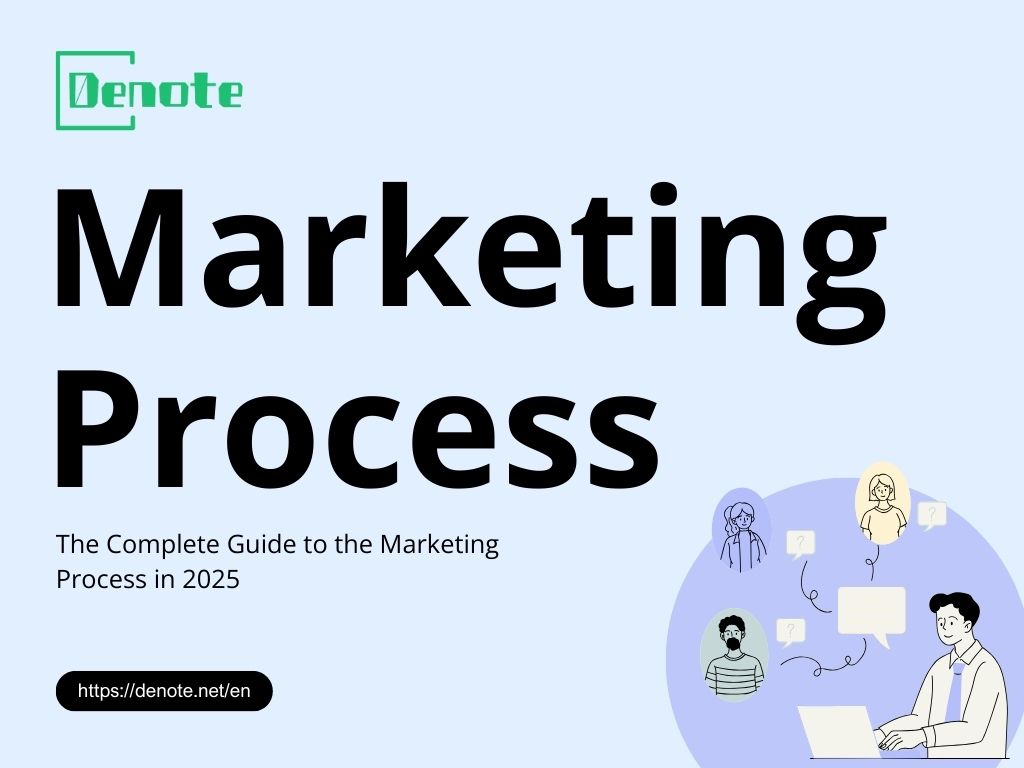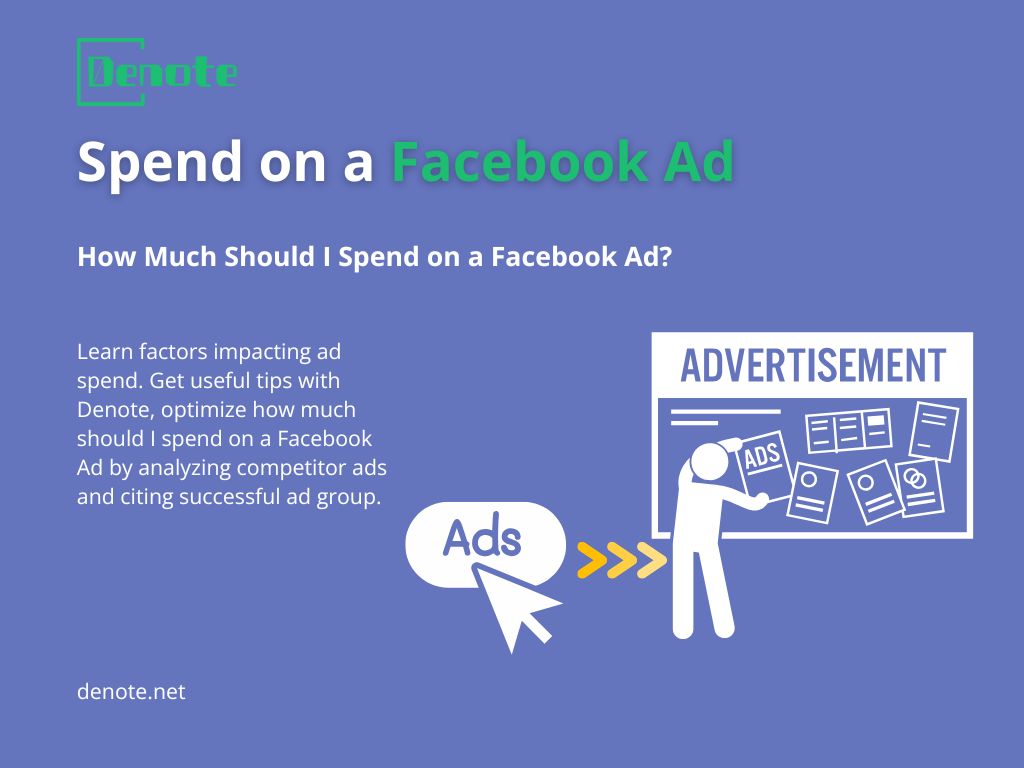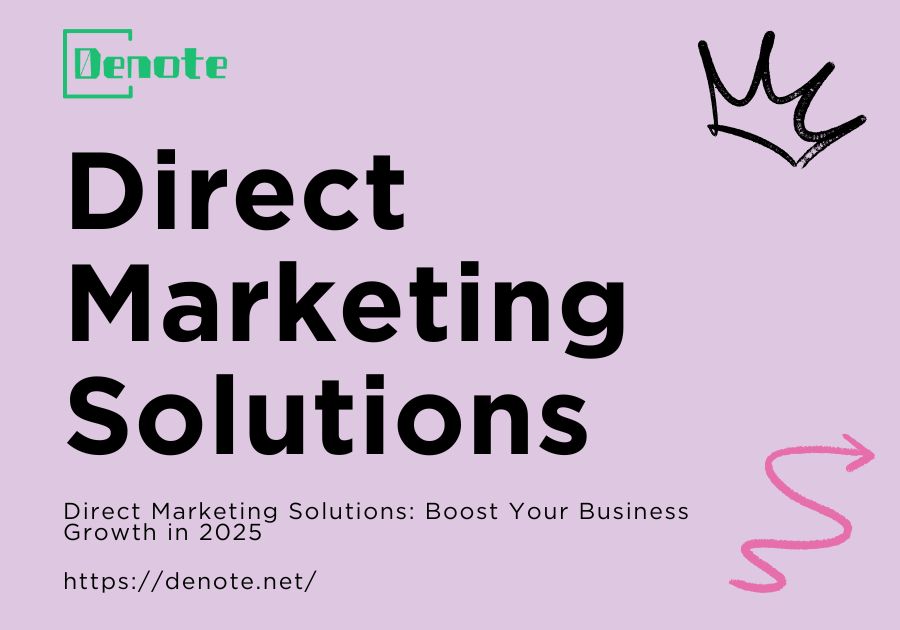What Are CGI Ads? The Complete Beginner’s Guide for Marketers
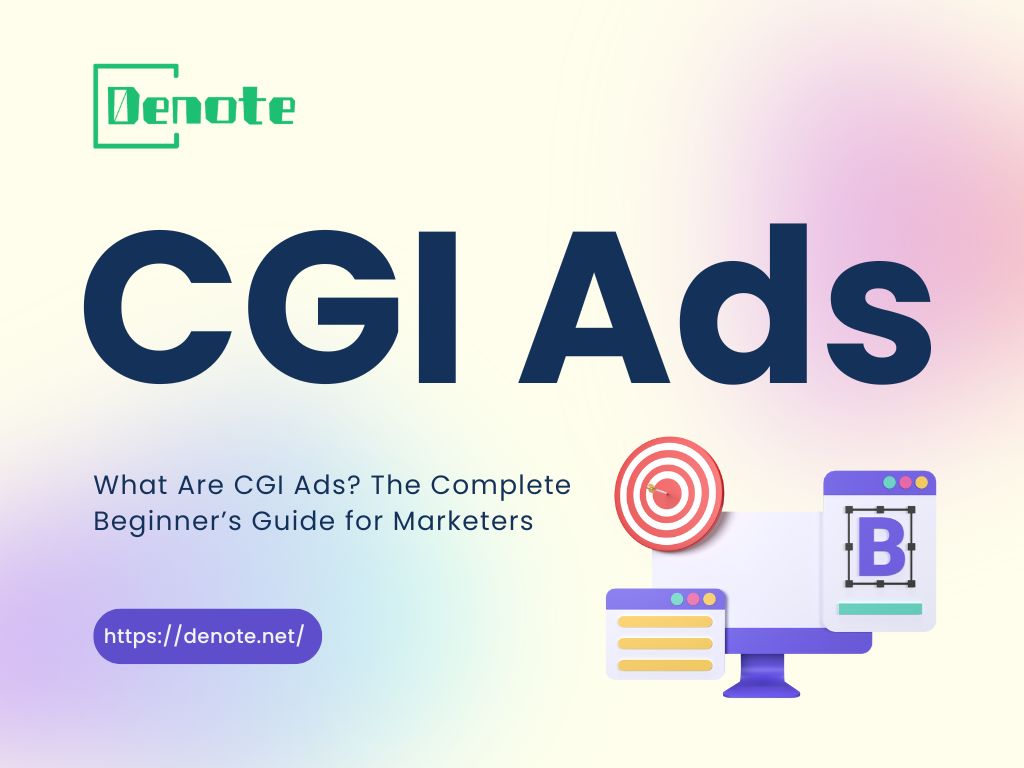
What Are CGI Ads
In today's hyper-digital world, the term "CGI Ads" is becoming increasingly familiar, even outside of creative and marketing circles. But what exactly are CGI Ads? To put it simply, CGI Ads — short for Computer-Generated Imagery Advertisements — are marketing visuals entirely or partially created using computer software, rather than traditional filming or photography. Think of them as the digital offspring of artistry and algorithms.
CGI Ads allow brands to craft breathtaking visuals that might be impossible, too dangerous, or too costly to capture in real life. Whether it’s a hyper-realistic car commercial that seamlessly transitions from city streets to a desert landscape, or a bottle of soda dancing across a surreal animated universe, CGI Ads open the doors to an infinite creative playground.
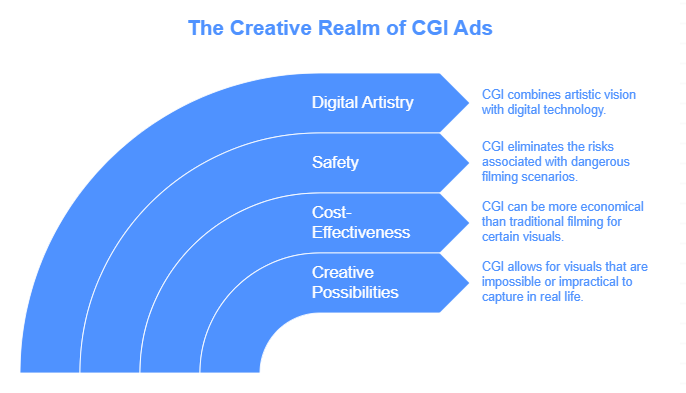
Why Brands Are Turning to CGI Ads
If one were to conceptualize CGI advertisements as a stock, the trajectory in recent years would show a marked upward trend. This substantial rise is not coincidental. A diverse array of industries has integrated CGI advertisements into their central marketing frameworks. The question, then, is: what factors are fueling this pronounced surge in adoption?
Cost Efficiency Compared to Traditional Production
At first glance, one might presume that CGI advertisements demand significant financial investment. The involvement of advanced 3D artists, specialized software, and the infrastructure required for rendering can certainly appear costly. Yet, paradoxically, CGI advertisements frequently prove to be more economical than traditional production methods.
Consider the various expenses inherent to conventional shoots: studio rentals, travel for models and crew, elaborate set construction, and the coordination of large teams. With CGI, the initial creation of digital assets becomes a reusable resource—these assets can be updated, modified, and adapted for multiple campaigns or diverse markets. For instance, a single virtual car model can be rendered in a winter setting or transformed for a summer-themed advertisement, all within a digital environment.
Additionally, CGI eliminates many unpredictable variables associated with live production, such as weather disruptions, travel logistics, location permits, and safety concerns. This predictability enables brands to maintain tighter control over their budgets, offering marketing departments greater financial confidence and stability throughout campaign planning and execution.
Unlimited Creative Possibilities
One of the biggest selling points of CGI Ads is that they unshackle creativity. The laws of nature don’t apply. Want to film a soda can surfing a tsunami made of honey? CGI can do it. Want your luxury watch ad to feature microscopic zoom-ins of the watch’s gears spinning in perfect harmony? CGI makes it possible.
This creative flexibility allows brands to tell stories that resonate on a deeper level with audiences. You’re no longer just selling a product — you're selling an experience, an emotion, even a fantasy. CGI Ads can turn mundane products into cinematic masterpieces, capturing attention in oversaturated digital feeds where viewers have become increasingly blind to traditional ad formats.
Denote, for example, helps creative teams analyze which CGI ad formats are trending in their industry, track competitor campaigns, and collect inspiration from a centralized creative library. This empowers brands to stay ahead of the curve and push creative boundaries intelligently, not just blindly.
Enhanced Visual Appeal and Realism
Remember when CGI looked painfully fake? Those days are rapidly fading into distant memory. Today’s CGI Ads boast hyper-realistic lighting, physics simulations, and texturing that often fool even trained eyes. Consumers now watch commercials where it's genuinely difficult to discern whether the car zipping down a highway is real or digitally generated.
This heightened realism enhances brand credibility and desirability. When a product looks flawless from every angle, with reflections dancing naturally off surfaces and shadows falling exactly where they should, it creates a sense of perfection that's hard to achieve with real-world filming.
Moreover, CGI Ads excel at showing products in ways impossible for cameras: cutaway views inside engines, close-ups at the molecular level, or gravity-defying stunts. And when paired with powerful tools like Denote for trend monitoring and creative asset management, brands can ensure they’re delivering visually stunning CGI Ads that align with what audiences crave.
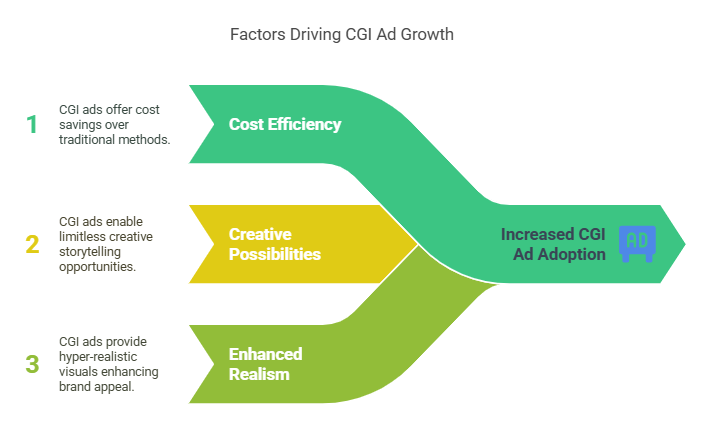
The Technology Behind CGI Ads
While CGI advertisements may appear almost magical to viewers, the reality involves a complex interplay of sophisticated software, creative vision, and technical expertise. Gaining an understanding of these underlying processes allows us to fully appreciate the remarkable advancements within the field of digital advertising.
3D Modeling and Animation
At the core of every CGI Ad lies meticulous 3D modeling. Skilled artists use advanced software like Blender, Autodesk Maya, or Cinema 4D to craft digital models from scratch. Every curve, texture, and polygon is carefully sculpted to create lifelike objects, environments, or characters.
Animation breathes life into these models. Animators manipulate digital skeletons and rigging systems to make characters move believably or simulate the bounce of a rubber ball. Whether it’s a hyper-real car commercial or a whimsical animated beverage mascot, animation gives CGI Ads their signature charm and energy.
Rendering and Post-Production
Rendering is where CGI Ads truly come to life. This computationally intensive process translates 3D models and animations into final 2D images or video frames, calculating lighting, reflections, shadows, and atmospheric effects.
High-end rendering engines like Redshift, V-Ray, or Unreal Engine 5 allow for photorealistic visuals that can rival live-action footage. Once rendered, post-production tools such as Adobe After Effects or DaVinci Resolve are used to color-grade, composite, and fine-tune the ad for maximum visual impact.
Rendering times can vary from minutes to several days, depending on complexity. But thanks to technological leaps — including cloud rendering services — even small agencies can now produce top-tier CGI Ads that once required Hollywood-sized budgets.
Integration with Live Action Footage
Some of the most captivating CGI Ads combine digital elements with live-action footage, blending the best of both worlds. This technique, known as compositing, allows brands to insert CGI objects seamlessly into real-world environments.
Imagine a fashion ad where a model walks down a runway flanked by floating holographic patterns — all rendered digitally and composited onto live footage. Or an automotive commercial where a real car drives through a landscape enhanced with CGI weather effects and scenery.
This hybrid approach allows for cost savings, enhanced realism, and creative flexibility. And tools like Denote support this workflow by enabling brands to analyze competitors who are successfully blending live-action with CGI, offering inspiration for future hybrid ad concepts.
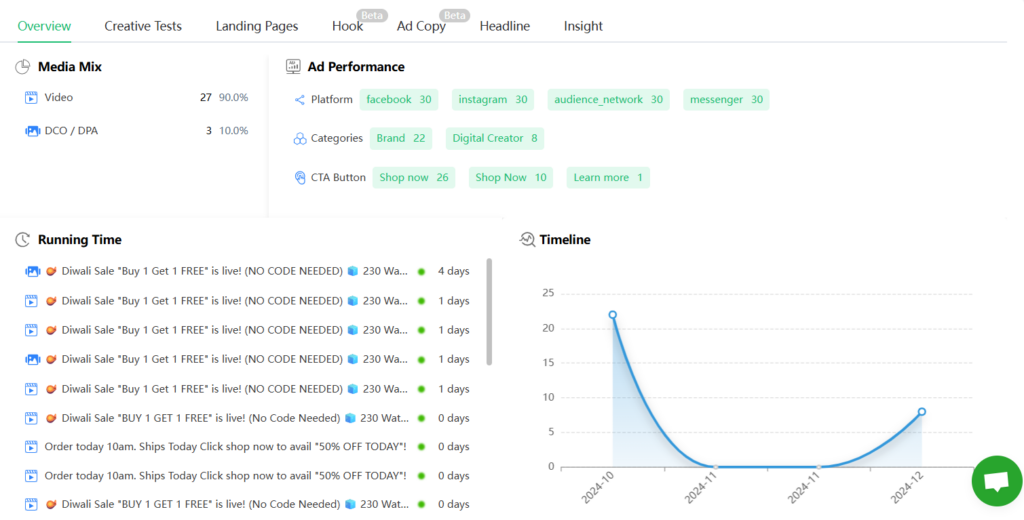
Case Studies of Successful CGI Ads
Let’s move from theory to practice. Several industries have fully embraced CGI Ads, with standout examples demonstrating the medium’s power.
Automotive Industry
Car commercials and CGI Ads are practically soulmates. Creating a full-scale shoot for a car ad often requires closing roads, staging elaborate sets, and navigating safety logistics. CGI Ads bypass many of these hurdles.
Brands like BMW, Audi, and Mercedes-Benz frequently use CGI Ads to showcase vehicles in exotic environments, extreme weather, or even futuristic cities — all without physically moving a single car. The photorealism is so advanced that most viewers assume they’re watching real cars on real roads.
CGI also allows for perfect lighting and reflections that accentuate the car’s design. Aerodynamic simulations can even visually demonstrate performance features that traditional filming could never capture.
Denote’s competitor tracking function has helped several creative agencies identify how leading automotive brands strategically deploy CGI Ads during key product launches, providing valuable insights for crafting similarly effective campaigns.
Food and Beverage Commercials
Food photography is notoriously difficult — melted ice cream, drooping lettuce, and flat soda are every commercial director’s nightmare. Enter CGI Ads.
With CGI, food can remain eternally fresh, perfectly proportioned, and impossibly appetizing. Coca-Cola has famously used CGI Ads to simulate the perfect pour, complete with glistening condensation and fizzing bubbles.
The beauty of CGI Ads in food and beverage is their ability to exaggerate deliciousness. Liquid simulations, particle physics, and macro-level rendering can make even the simplest meal look like a gourmet masterpiece.
Denote users often monitor these hyper-realistic food ad trends, gathering inspiration for their own campaigns while spotting shifts in consumer visual preferences across different markets.
Fashion and Apparel Brands
Fashion brands are increasingly blending CGI Ads into their digital marketing arsenals. Virtual models, fully digital runway shows, and hyper-stylized product shots have become common practice.
Take Balenciaga’s virtual fashion shows or Nike’s CGI-enhanced sneaker campaigns. These CGI Ads allow brands to explore bold aesthetics that might be impractical or prohibitively expensive in the real world.
Beyond aesthetics, CGI Ads give fashion brands a scalable way to create diverse visuals across global campaigns — adapting colors, environments, and models to local market tastes without the logistical burden of organizing dozens of shoots.
Denote’s internal asset management feature empowers fashion marketers to build organized libraries of their CGI Ads, ensuring easy access to past campaigns, variant assets, and market-specific adaptations.
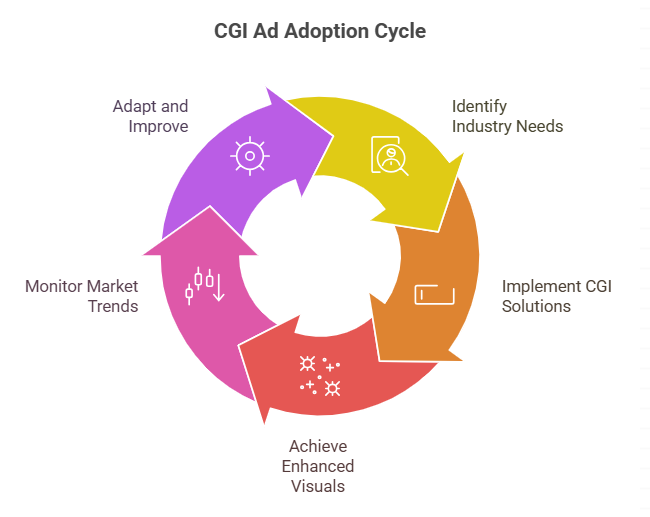
Challenges and Limitations of CGI Ads
While CGI Ads dazzle with their endless possibilities, it's not all smooth sailing. Like any marketing approach, CGI Ads come with their own set of challenges and limitations that brands need to navigate carefully.
Technical Complexity
Developing CGI advertisements isn’t a simple matter of pressing a button and expecting flawless visuals to emerge. It’s a complex process that demands the seamless integration of technical proficiency and creative vision. Brands must coordinate with a diverse team—ranging from 3D modelers and animators to lighting designers, texture artists, and rendering experts. Every phase of the CGI pipeline is laden with intricate details; a single oversight can easily compromise the entire illusion.
Even minor errors in rendering—such as unnatural lighting, implausible physics, or awkward character movements—can disrupt viewer immersion. Unlike traditional video shoots, where slight imperfections may enhance authenticity, flaws in CGI tend to be conspicuous and distracting.
Furthermore, technological advancements have raised audience expectations. Viewers today are highly adept at identifying poorly executed CGI. Brands that attempt to reduce costs at the expense of quality risk not only public ridicule but also damage to their credibility. In this ever-evolving digital landscape, the margin for error continues to shrink.
Budget Considerations
Although CGI Ads can be cost-efficient compared to elaborate live shoots, they are not always cheap. High-end CGI Ads, particularly those with photorealistic rendering or complex simulations, still demand significant investment.
For smaller brands with limited budgets, commissioning an intricate CGI Ad may simply not be feasible — especially when considering the hardware, software licenses, and experienced personnel involved.
That’s where strategic planning tools like Denote come into play. By analyzing competitor benchmarks, trending visual styles, and performance metrics, Denote helps brands make informed decisions on where to focus their CGI Ads budgets for maximum impact.
Viewer Perception and Authenticity Concerns
One of the double-edged swords of CGI Ads is their perfection. While flawless visuals attract attention, they may also create a sense of artificiality. In an age where consumers increasingly value authenticity and transparency, some viewers may perceive heavily stylized CGI Ads as too polished or disconnected from reality.
For industries like food or fashion, this concern is particularly relevant. Overly perfect CGI Ads may trigger skepticism about whether the real product matches its digital representation.
Successful brands often strike a balance by blending CGI with authentic storytelling, grounding the fantasy in relatable narratives that build trust rather than suspicion.
The Future of CGI Ads in Digital Marketing
Despite these challenges, the trajectory of CGI Ads continues to rise steeply. Several exciting developments are set to reshape how brands leverage CGI Ads in the near future.
AI-Powered CGI Tools
Artificial intelligence is revolutionizing the world of CGI Ads. AI-powered tools now assist in automating parts of the CGI pipeline that previously required extensive manual labor. Procedural generation algorithms can automatically create complex environments. AI-enhanced rendering engines optimize lighting and materials for photorealism in a fraction of the time.
Even generative AI models like text-to-3D or text-to-animation are emerging, allowing marketers to prototype CGI Ads simply by describing a scene. This democratizes access, enabling smaller brands to experiment with CGI Ads without massive upfront investments.
Denote integrates seamlessly into this evolving landscape. Its AI-powered competitor monitoring engine allows brands to track how rivals are adopting AI-driven CGI Ads techniques — identifying early adopters, trending aesthetics, and new consumer engagement patterns across industries.
Virtual Influencers and CGI Characters
The rise of virtual influencers is perhaps one of the most fascinating offshoots of CGI Ads. Characters like Lil Miquela and Shudu have amassed millions of followers, blurring the line between reality and fiction. Brands are increasingly partnering with these fully digital personalities to endorse products through CGI Ads.
Why? Because virtual influencers don’t age, misbehave, or demand expensive contracts. They’re fully controllable avatars that perfectly embody brand messaging while tapping into niche digital communities.
Brands creating their own CGI brand mascots or spokespersons can maintain consistent image control across global campaigns — a strategy that Denote users closely analyze when studying competitor successes in emerging markets.
The Role of CGI in AR and VR Advertising
As augmented reality (AR) and virtual reality (VR) technologies advance, CGI Ads will play a foundational role. AR-enabled shopping experiences, for example, allow consumers to place virtual furniture in their homes or try on digital clothing — all powered by sophisticated CGI rendering engines.
VR experiences take things a step further, offering fully immersive branded worlds. Imagine a sneaker brand building a virtual skatepark where users can try shoes, or an automotive brand offering virtual test drives.
For brands seeking to venture into AR and VR, Denote offers valuable trend data and competitor case studies to understand how industry leaders are integrating CGI Ads into immersive platforms — helping inform future marketing strategies.
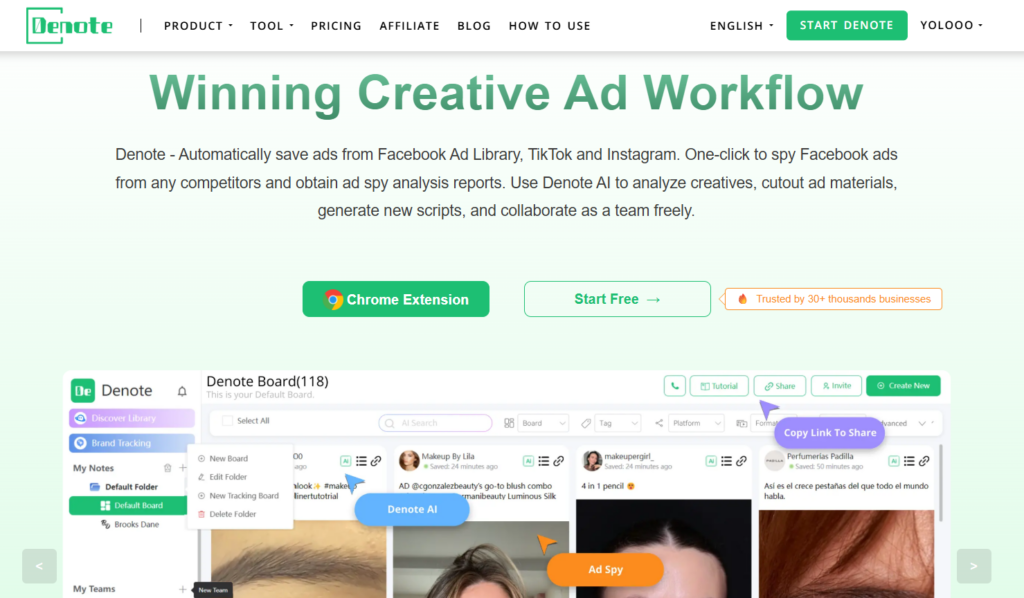
Conclusion
CGI Ads have swiftly evolved from being an experimental niche to becoming a dominant force reshaping modern advertising. They offer brands an unprecedented level of creative freedom, allowing marketers to tell visually stunning stories that would otherwise be impossible or unaffordable with traditional production methods.

